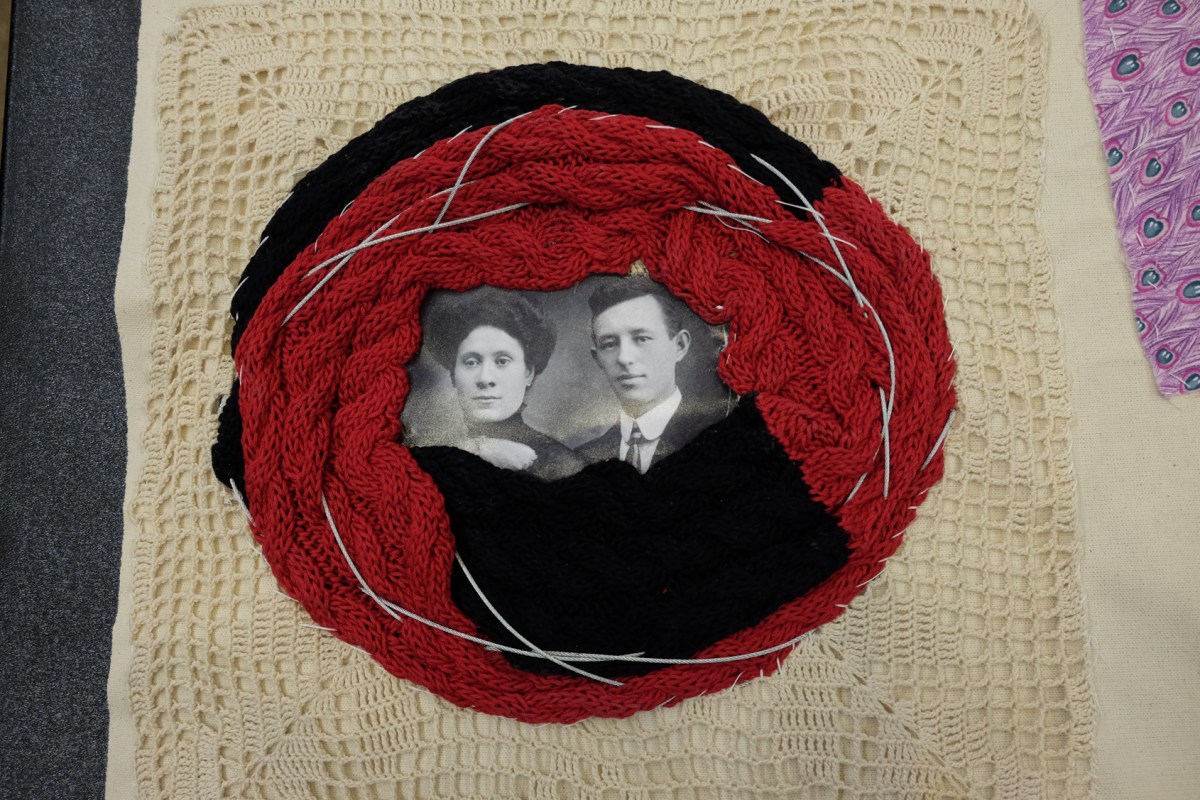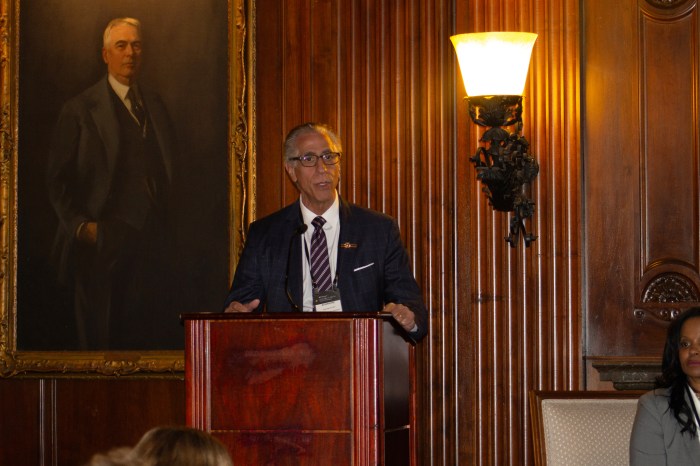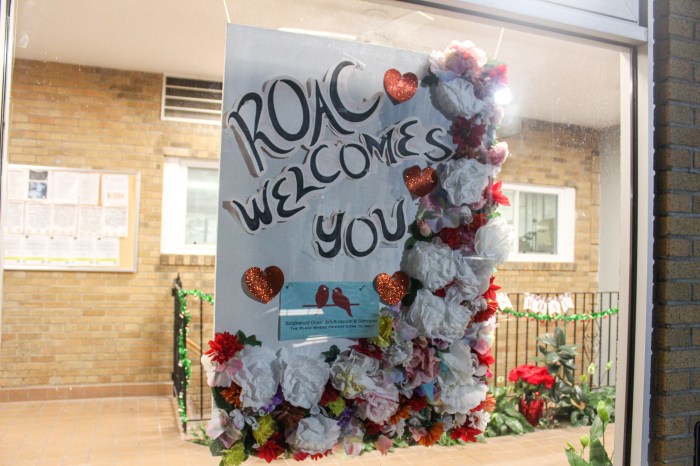BY TEQUILA MINSKY | Four lines of tables, each covered by a 60-foot length of canvas, stretched the span of of F.I.T.’s John E. Reeves Great Hall. It was noon on Sunday morning, March 17, and the atmosphere was buzzing.
The creative energies of those skilled with fabric and embellishments, sewing and other needlework were adding their input into “A Collective Ribbon,” a creation formed from smaller individual pieces of fabric brought by the participants. These “ribbons” — a total of 300 feet, 2 feet wide, once finished — are part of a new permanent memorial to the Triangle Fire.
Participants were asked to bring fabric or items that had meaning to them that would become a part of the ribbon, which would add to the “texture” of an element of the memorial.
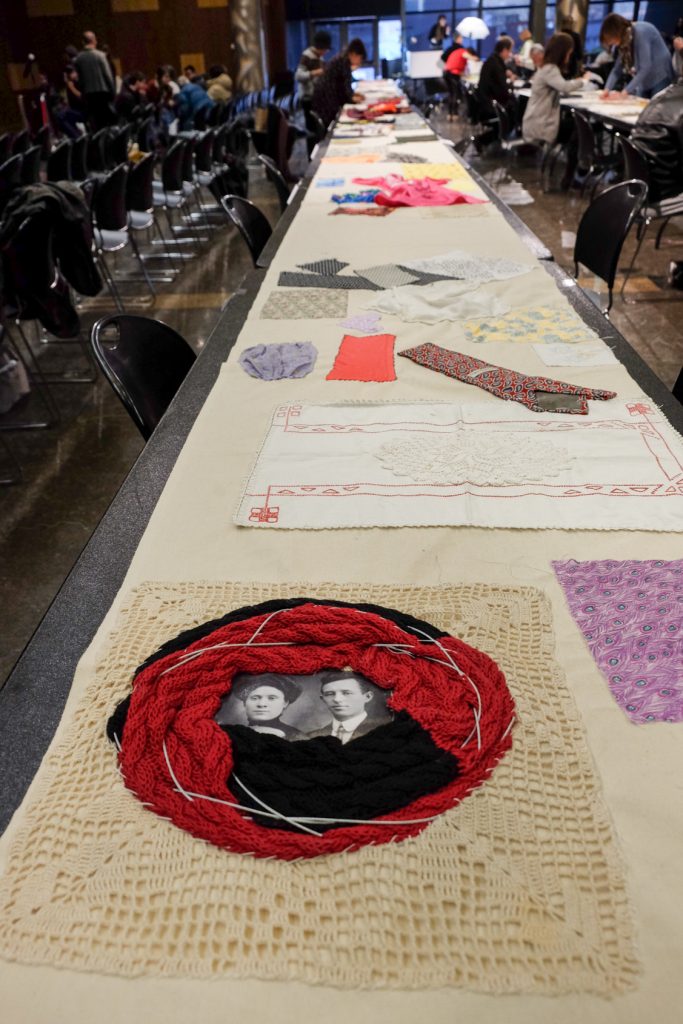
The ribbon will be scanned and cast in metal. It will then be installed stretching up the corner of the building at the northwest corner of Washington Place and Greene St. that was the site of the tragic Triangle Shirtwaist Factory Fire. The installation will reach past the ninth floor of the building, which is today owned by New York University.
Diana brought crocheted edgings her great-grandmother had made. Her daughter Anna sewed onto the canvas the silky bolero from her grandmother’s wedding dress.
Adding to the collaborative project, Dr. Fedele Vero transferred a photograph onto the fabric of his great aunt who perished in the fire. Catherine Uzzo also perished in the disaster and her great-great niece remembered her by writing her name in yarn. Others added pieces to the canvas that just had personal references.
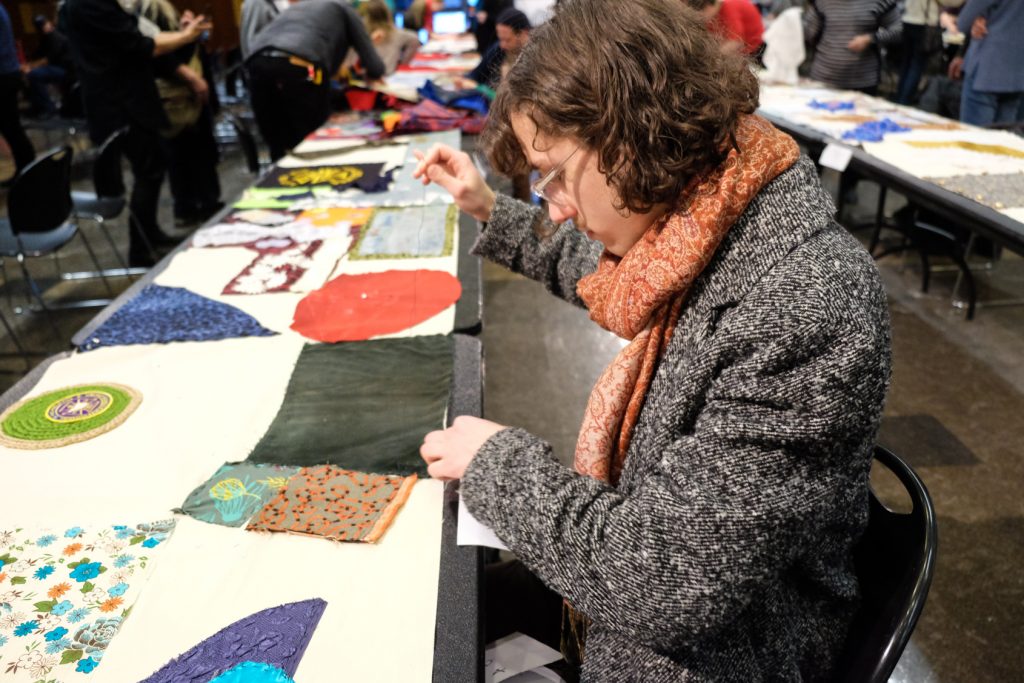
“It was nice to be part of a collaborative event with a lot of others,” said Chelsea resident Marta Schmidt. An experienced sewer, her long and abiding interest in women’s labor rights made her involvement in the creative project deeply meaningful for her.
Designers Richard Joon Yoo and Uri Wegman won the memorial design competition that Remember the Triangle Fire Coalition held in 2013. The design has been approved by the Landmarks Preservation Commission and Community Board 2. The project is moving steadily ahead toward the construction phase.
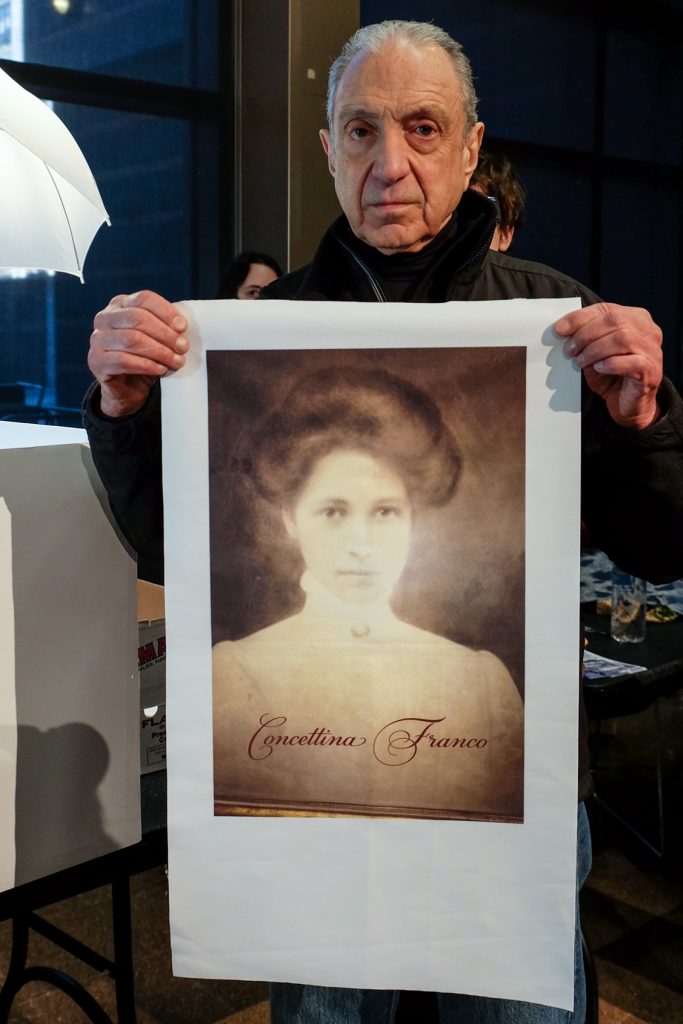
“We hope to complete this by the fire’s anniversary date, March 25, 2020,” said Daniel Levinson Wilk, an F.I.T. history professor and a board member of the coalition. He noted how collaborative aspects like the “Collective Ribbon” help engage the community with the memorial.
The items or fabric swatches that people brought along with their accompanying stories were photographed to document them before being attached to the canvas. These, along with testimonies that were videotaped in front of a Triangle Shirtwaist Factory Fire quilt, will be archived at Kheel Center for Labor-Management Documentation & Archives at Cornell.
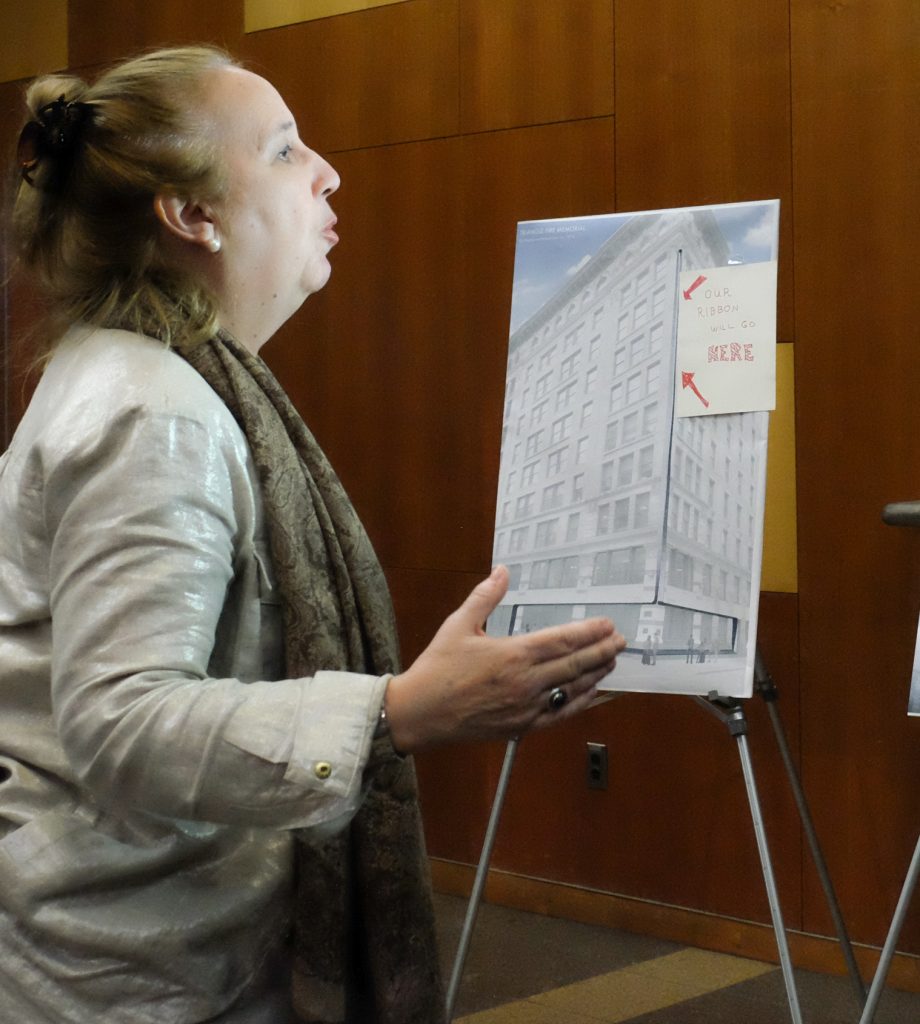
During the two-day F.I.T. event, while women and men practiced their needlecraft skills, various other Triangle Fire programming took place.
On Sun., March 17, actress Lulu Lolo evocatively presented her one-person “Soliloquy for a Seamstress,” in which she portrayed Triangle victim Sarafina Saracino, who, with her sister Teresina Saracino, is caught in the factory as the smoke and fire rise, and they ultimately jump to their deaths. The Young People’s Chorus performed a moving segment of the opera “Fire in My Mouth,” by Julia Wolfe, inspired by the deadly blaze.
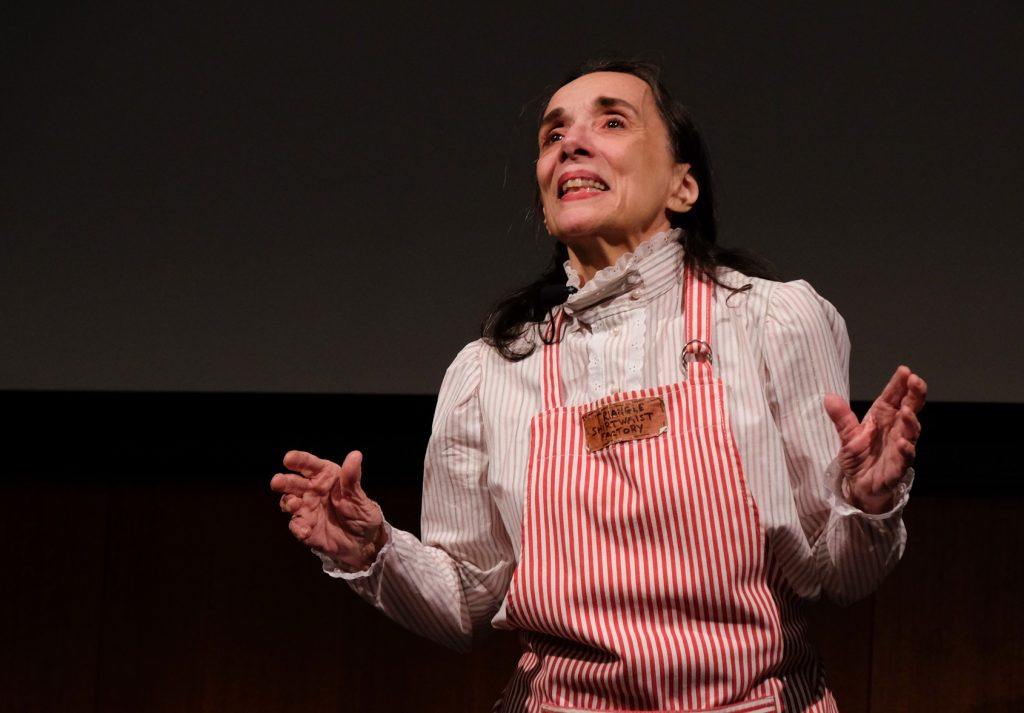
Manhattan Borough President Gale Brewer attended and observed the sewing in progress.
The annual commemoration of the anniversary of the Triangle Shirtwaist Factory Fire was held Mon., March 25, at what today is known as N.Y.U.’s Brown Building, one block east of Washington Square Park.



